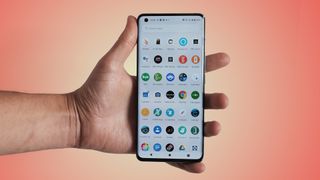Vivo's new cheap phones might rival the best Xiaomi Redmi and Moto G devices
A new contender enters the ring

When you're looking to buy a great cheap phone there are generally two brands you look to: Xiaomi, with its Redmi line of devices, and Motorola, with its G series of phones, though LG, Oppo and Realme all have affordable devices worth considering too.
There's a new challenger in the ring though, in the form of Vivo, which just launched its first-ever selection of smartphones in Europe - as well as an impressive flagship, there are also a few affordable phones that may rival Xiaomi and Motorola offerings.
- These are the best smartphones
- Check out our iPhone 12 review
- The Samsung Galaxy S21 is coming soon
The flagship is the Vivo X51 5G, which has a range of camera features that'll impress many - these include a gimbal in the main camera for incredible stabilization, plenty of nuanced night modes, and great zoom capability. We were also impressed by its attractive design and display.
You can read all our thoughts on the phone in our Vivo X51 5G review - but while that eye-catching phone turned heads at the Vivo launch, the cheap phones flew under the radar a little. However they might end up being the real champs here.
Vivo's affordable devices

The new Vivo phones are the Y70, Y20 and Y11s. We don't have full specs lists for any of these just yet, but what we've heard sounds good. It's also worth pointing out that availability has been announced for Europe, but we've no idea if these devices will come to the US or Australia.
The Vivo Y70 has a FHD+ AMOLED display, which is pretty impressive for an affordable phone, and it also has an in-display fingerprint scanner, which is a rarity in handsets at this price point. We don't know the number of cameras, but the main one is 48MP, the chipset is Qualcomm's Snapdragon 665, and that's paired with 8GB of RAM and 128GB of storage (with expandable storage up to 1TB).
You'll be able to pick up the Vivo Y70 for £279 (roughly $365, AU$510), which puts it in competition with some of the top Redmi Note phones.
Get daily insight, inspiration and deals in your inbox
Get the hottest deals available in your inbox plus news, reviews, opinion, analysis and more from the TechRadar team.
The Vivo Y20 and Y11s sound similar to each other - they both pack side-mounted fingerprint scanners, Snapdragon 460 chipsets, and 5,000mAh batteries - the main difference is that the Y20 has three rear cameras, but the Y11s only has two.
The Y20 will come out at £149 (around $200, AU$270) - we don't know a price for the Y11s, but we'd expect it to be even more affordable, maybe going for a double-digit price in the UK. At those prices and with those battery sizes, both phones sound like close competitors to some Moto G phones, especially the Moto G8 Power and G8 Power Lite.
Healthy competition

The affordable phone market is arguably more interesting than the premium phone one - while manufacturers keep putting out super-expensive phones that all look and function near-identically, at the low end, brands keep trying to find intriguing ways to keep prices low while offering great phones.
Just look at Xiaomi's Redmi phones, which offer great camera experiences, or Moto's G devices, which have great user experiences, or Samsung's A line with great displays, or Oppo's A handsets with good-looking designs - in a bid to win over those with limited budgets, companies are focusing on different things and innovating in those sectors.
That's why it's exciting that a new brand is joining the fray - it could upset the balance, and cause companies to scramble to find new things to focus on, or it could just press brands to work harder at perfecting their devices.
At the very least, it gives people in the market for a new phone a bigger selection of devices to choose from, making it more likely they'll find something perfect for them.
Vivo's new phones come out October 29, and this marks the company's European debut - but there's more coming. We spoke to Vivo prior to the launch on what's coming, and you can read the full interview here.

Tom Bedford was deputy phones editor on TechRadar until late 2022, having worked his way up from staff writer. Though he specialized in phones and tablets, he also took on other tech like electric scooters, smartwatches, fitness, mobile gaming and more. He is based in London, UK and now works for the entertainment site What To Watch.
He graduated in American Literature and Creative Writing from the University of East Anglia. Prior to working on TechRadar, he freelanced in tech, gaming and entertainment, and also spent many years working as a mixologist. He also currently works in film as a screenwriter, director and producer.
